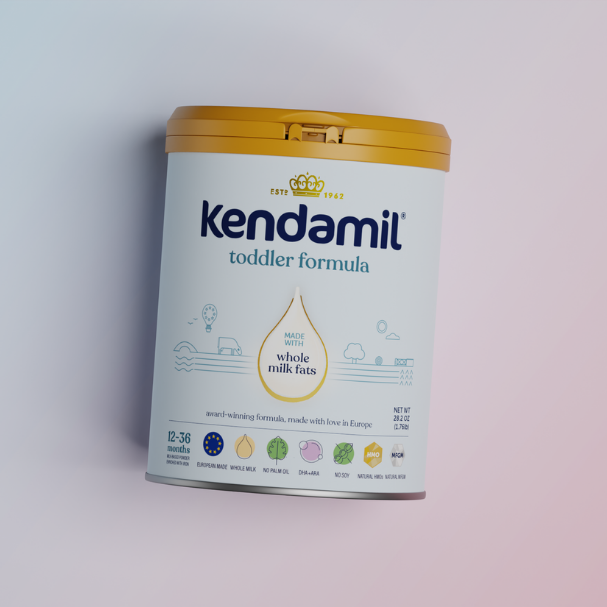While your baby's due date is fast approaching, you may be searching for tips on how to get prepared and what to expect. We’ve got the lowdown on everything you need to know and a handy checklist on what to have ready.
Preparing For Life After Birth
Creating a Safe Sleep-Friendly Nursery
When shopping for your nursery essentials, safety always comes first. It’s advised that the safest place for a baby to sleep is in their own clear, flat, separate sleep space such as a crib or bassinet. A firm, flat, waterproof mattress with no raised or cushioned areas is recommended, as is avoiding products like baby bouncers as sleep spaces. If your baby falls asleep in a baby bouncer, you should take them out and put them in their safe, designated sleeping space.
Feeding baby: what to expect
Newborns march to the beat of their own drum and they’ll want to be fed around the clock. At times, it might feel non-stop but as they mature, it’ll become less frequent. When it comes to breastfeeding, it's incredibly challenging to overfeed, so don’t worry. In the first few weeks, it's typical for a baby to feed at least 8 to 12 times, or more, within 24 hours.
Calm and relaxed moments are ideal for feeding your baby. Look out for signs that they might be hungry, like fist-sucking, lip-licking, wriggling and if they’re trying to get to your breast or their bottle. If you’re breastfeeding, it’s always a good idea to let them feed completely from each breast, as the fattier milk tends to be towards the end.
Newborn Sleep Patterns & Cycles
The world of newborn sleep can be both fascinating and confusing for new parents. While adults’ sleep cycles are pretty predictable, newborns have their unique rhythm, shaped by their developing brains and the basic needs of their tiny bodies.
Sleep Cycles:
- Newborns sleep 16 to 17 hours per day, in 2-4 hour periods between feeds.
- Sleep cycles last about 50 minutes, featuring both REM and non-REM sleep.
- Frequent waking is common due to short sleep cycles and feeding needs.
- REM sleep is crucial for brain development; look for twitching fingers or eyelids.
- Sleep patterns evolve due to growth spurts, teething, and illnesses.
Newborn Care Basics
Those first few days to weeks with your newborn are going to be a whirlwind and a lot of it will revolve around getting to know your little one, as well as a lot of feedings and changing diapers, but here are some tips to help you adjust and feel at ease.
Diaper Changes:
- Change diapers immediately when wet or soiled to prevent rash.
- Newborns: Up to 12 changes a day; Older babies: 6-8 changes a day.
- Set up a changing station with essentials: changing pad, wipes, diapers, diaper rash ointment.
- Use floor spaces for safety during changes.
- Cleaning: Be gentle but thorough. Girls: front to back; Boys: don't pull back foreskin.
- Allow some diaper-free time to help skin breathe.
- Use changing time to chat and bond with your baby.
Understanding Baby Poop:
- Initial poop is greenish-black and sticky, known as meconium.
- Color changes to a yellowish hue within days.
- Breastfed: runnier poops; Formula-fed: firmer, more aromatic poops.
- Frequency: Up to 4 times a day initially, decreases over time.
- Soft poop is a sign of normal bowel movement.
- Consult healthcare provider for any concerns.
Umbilical Cord Care:
- Keep the stump clean and dry.
- A little blood when the stump has dropped off is normal; consult your doctor for swelling, oozing, or bad smell.
- Fold down the front of the diaper to keep the area dry.
Handling Your Newborn:
- Initial handling may feel daunting but confidence is key.
- Always cradle the baby's head and neck.
- Clean hands are a must before handling.
- Use gentle touches and take opportunities to bond.
Washing & Bathing Your Baby:
- Daily baths aren’t essential, a bath three times a week is enough.
- Bath time is ideal at a time where your baby is calm.
- Make sure the room is warm. Use warm water, tested with your wrist or elbow.
- Avoid adding cleansers in the first month.
- Support your baby's head and upper arm when placing in and lifting out of the bath. Gently swish the water, keeping their head dry.
- Post-bath is perfect for a gentle massage; wait a month before introducing oils or lotions.
Postpartum Care Plan For Mom
It’s important to be prepared for postpartum body changes and recovery. Understanding what to expect and setting up a postpartum routine can also help ease you into motherhood. Forward planning as much as you can in your third trimester such as meal planning and buying in new mom self-care essentials can really help in those first few weeks once baby comes home.
Postpartum Body Changes and Recovery:
Stitches: It's soothing to bathe stitches daily with just warm water. If they feel a little sore, a chat with your doctor might help as well as if you're considering pain relief, especially when breastfeeding.
Toilet Matters: Drinking plenty of water can make urinating a bit more comfortable and it's totally normal if it takes a few days before having a bowel movement. Enjoying fiber-rich foods will help!
Bladder Control: Some new moms notice little leaks, which is quite common and simple pelvic floor exercises when practiced daily can really help regain control back. You may not see results for a few months but consistency is key.
Piles: These can be a short-lived experience after birth. Eating fiber-rich foods, staying well-hydrated and not straining too hard is essential.
Post-Birth Bleeding (Lochia): You can expect to bleed for the first 4-6 weeks post-birth, but soft, super-absorbent sanitary pads are a friend during this time.
Breasts: Initially, you produce a golden nectar, colostrum, for the baby, which won’t seem like a lot but it’s the good stuff full of everything the baby needs in those first few days, their tummies are the size of a cherry on day 1. By days 3 or 4, as your breasts transition to producing milk, your breasts will become fuller and your baby can consume more milk.
Tummy: After delivery, it's natural for the tummy to feel different - your bump won’t disappear straight away and for most women the uterus takes around 6 weeks to shrink back down to its non-pregnant size. With some time, a healthy, nutritious diet, and gentle movements, it finds its way back. Make sure you get the sign-off from your doctor before you start exercising again. The first 6 weeks should be focussed on regaining strength and replenishing your body with nutrients.
Throughout this journey, always remember, every mom's path to recovery is unique, and there's a whole village of support available. For more postpartum recovery tips check out our blog.
Postpartum Preparation Checklist:
- Pre-prepared meals
- Stock up on healthy snacks
- Comfortable clothing, slippers, underwear and pajamas for mom
- Stock up on new mom self-care essentials: maternity underwear (disposable), maternity pads, advil, breast pads, nipple cream, stool softener, perineal spray bottle, ice packs
- Stock up on newborn essentials: diapers, wipes, diaper sacks, pajamas, bodysuits, muslin burp cloths
- Baby crib/ bassinet assembled with clean bedding
- Baby car seat installed following manufacturer’s instructions
- Stroller setup and ready
- Baby diaper bag filled with diapers, wipes, diaper sacks, bodysuits, pajamas, muslin burp cloths, hand sanitizer, small pot of diaper rash ointment, changing pad
- Prepare baby changing caddy for living room and bedroom with diapers, wipes, diaper sacks, bodysuits, pajamas, muslin burp cloths, hand sanitizer, small pot of diaper rash ointment
- Breastfeeding: stock up on breast pads, nipple cream, maternity bras, bibs, muslin burp cloths, breast pump, milk storage bags
- Bottle Feeding: stock up infant formula, bottles, nipples, bibs, burp cloths, bottle cleaning brush, sterilizer, vacuum flask, formula powder containers for travel. Prepare a bottle preparation station in the kitchen
- Baby clothes washed and readily available
- Baby-proof sockets, cupboards & furniture (they’ll be crawling before you know it!)














